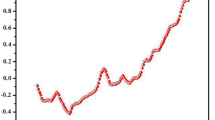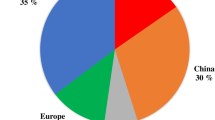Abstract
Air pollution is a ubiquitous problem plaguing global citizens with decreased quality of life. Pollutants are created both indoors and out and contribute to poor indoor and ambient air quality. Indoor air purification technologies have been created and are successful in removing particulate matter, though there are severe limitations and environmental repercussions with existing technologies used to eliminate gaseous pollutants. To address this need, research and development led to the creation of a gaseous pollution control device which uses a patented photocatalyst capable of simultaneously destroying both volatile organic compounds and nitrogen oxides over extended time durations. A laboratory-scale prototype was built and a rigorously tested to evaluate the removal of nitric oxide and select volatile organic compounds (formaldehyde, ethanol and limonene). The test campaign used various velocities, surface conditions, length scales, light power outputs and pollutant compositions to generate a statistically relevant data set for evaluating performance. Performance evaluation of the two prototype units produced reduction efficiency between 550–60% for formaldehyde, 60–85% for nitric oxide, 80–99% for limonene, and 100% for ethanol, over the air velocity range of 0.5 to 2.0 m s−1. Removal efficiency of the unit appears to be most dependent on the molecular structure (i.e., bond strength) of the pollutant and the pollutant residence time within the unit (i.e., velocity or having multiple units in series). Additionally, there are opportunities for optimizing performance of the units through controlling power output of the illumination source or periodically performing a simple water rinse.
Graphical abstract













Similar content being viewed by others
Availability of data and material
Data may be available to those wishing to work in collaboration with the authors.
Code availability
Not applicable.
References
ASHRAE (2012) ANSI/ASHRAE Standard 52.2–2012: method of testing general ventilation air-cleaning devices for removal efficiency by particle size. ASHRAE ISSN 1041–2336
ASHRAE (2015) Chapter 48: noise and vibration control. In: ASHRAE handbook: heating, ventilation and air conditioning application, p 48.14
[CCME] Canadian Council of Ministers of the Environment (2021) Canada’s air. https://www.ccme.ca/en/air-quality-report. Accessed 26 Feb 2021
[DIN] Deutsches Institut für Normung (2016) Test method for air-purification performance of semiconducting photocatalytic materials–part 1: removal of nitric oxide ISO 22197–1:2007. English Translation of DIN ISO 22197-1:2016–2104
Destaillatas H et al (2012) Key parameters influencing the performance of photocatalytic oxidation (PCO) air purification under realistic indoor conditions. Appl Catal B 128:159–170
Flagan RC, Seinfeld JH (2012) Chapter 1.1–air pollutants and chapter 8.5–removal of NOx from effluent streams. In: Fundamentals of air pollution engineering. Dover Publications Inc. Mineola, pp 2–10, 512–517
Greenwood NN, Earnshaw A (1997) Chapter 11–nitrogen. In: Chemistry of the Elements, 2nd edn. Butterworth-Heinemann, Oxford, pp 406–472. https://doi.org/10.1016/B978-0-7506-3365-9.50017-1
[GoC] Government of Canada (2015) Residential indoor air quality guideline: nitrogen dioxide. https://www.canada.ca/en/health-canada/services/publications/healthy-living/residential-indoor-air-quality-guideline-nitrogen-dioxide.html. Accessed 14 Apr 2021
[GoC] Government of Canada (2020) Residential indoor air quality guidelines. https://www.canada.ca/en/health-canada/services/air-quality/residential-indoor-air-quality-guidelines.html. Accessed 4 Feb 2021
[GoC] Government of Canada (2021) Volatile organic compounds. https://www.canada.ca/en/health-canada/services/air-quality/indoor-air-contaminants/volatile-organic-compounds.html. Accessed 4 Feb 2021
Haghighat Mamaghani A, Haghighat F, Lee CS (2017) Photocatalytic oxidation technology for indoor environment air purification: the state-of-the-art. Appl Catal B 203:247–269. https://doi.org/10.1016/j.apcatb.2016.10.037
LibreTexts (2020) Bond energies & enthalpies. https://chem.libretexts.org/@go/page/41418. Accessed 8 Apr 2021
Lu C, Zhu M, Qiu L, Payton A, Sakai T (2015) Photocatalyst testing for NOx decomposition: upon request for envision SQ. University of Toronto, Impact Centre
Luengas A, Barona A, Hort C, Gallastegui G, Platel V, Elias A (2015) A review of indoor air treatment technologies. Rev Environ Sci Biotechnol 14:499–522. https://doi.org/10.1007/s11157-015-9363-9
Mo J, Zhang Y, Xu Q, Lamson JJ, Zhao R (2009) Photocatalytic purification of volatile organic compounds in indoor air: a literature review. Atmos Environ 43:2229–2246. https://doi.org/10.1016/j.atmosenv.2009.01.034
Myllyvirta L (2020) Quantifying the Economic Costs of Air Pollution from Fossil Fuels. Centre for Research on Energy and Clean Air. https://energyandcleanair.org/wp/wpcontent/uploads/2020/02/Cost-of-fossil-fuels-briefing.pdf. Accessed 20 Sept 2021
[NCBI] National Center for Biotechnology Information (2021) PubChem periodic table of elements. PubChem. https://pubchem.ncbi.nlm.nih.gov/periodic-table/. Accessed 27 Apr 2021
[NRC] National Research Council (U.S.) (1991) Chapter 8: Atmospheric Observations of VOC, NOx and Ozone. Rethinking the Ozone Problem in Urban and Regional Air Pollution. National Academies Press, Washington, D.C, pp 211–250
OpenStax (2016) Chapter 7.5–strengths of ionic and covalent bonds. In: Chemistry. OpenStax CNX. http://cnx.org/contents/85abf193-2bd2-4908-8563-90b8a7ac8df6@9.311. Accessed 8 Apr 2021
Patelarou E, Tzanakis N, Kelly FJ (2015) Exposure to indoor pollutants and Wheeze and Asthma development during early childhood. Int J Environ Res Public Health 12:3993–4017. https://doi.org/10.3390/ijerph120403993
Shaw S, Van Heyst B (2020) The design sequence for a continuous, in-situ HVAC gaseous air purification system. In: ASHRAE 2020 virtual conference. Paper VC-20-C029, pp 1–10
Shayegan Z, Lee CS, Haghighat F (2018) TiO2 photocatalyst for removal of volatile organic compounds in gas phase—a review. Chem Eng J 334:2408–2439. https://doi.org/10.1016/j.cej.2017.09.153
Shayko S, Lu C, Qiu X (2017) Photocatalytic composite material for the decomposition of air pollutants. (World Patent No. WO 2017/106963 Al). World Intellectual Property Organization, International Bureau
[UN DESA] United Nations Department of Economic and Social Affairs (2021) Sustainable development: the 17 goals. https://sdgs.un.org/goals. Accessed 2 Feb 2021
[WBG, 2021] World Bank Group (2021) Pollution. https://www.worldbank.org/en/topic/pollution#:~:text=According%20to%20the%20World%20Bank,to%204.8%25%20of%20global%20GDP. Accessed 2 Feb 2021
[WHO] World Health Organization (2021) Air pollution. https://www.who.int/health-topics/air-pollution#tab=tab_1. Accessed 2 Feb 2021
Wu Q, van de Krol R (2012) Selective photoreduction of nitric oxide to nitrogen by nanostructured TiO2 photocatalysts: role of oxygen vacancies and iron dopant. J Am Chem Soc 134:9369–9375. https://doi.org/10.1021/ja302246b
Xu M, Wang Y, Geng J, Jing D (2017) Photodecomposition of NOx on Ag/TiO2 composite catalysts in a gas phase reactor. Chem Eng J 307:181–188. https://doi.org/10.1016/j.cej.2016.08.080
Yoder C (2021) Common Bond Energies (D) and Bond Lengths (r). http://www.wiredchemist.com/chemistry/data/bond_energies_lengths.html. Accessed 8 Apr 2021
Yu H, Zhang K, Rossi C (2007) Theoretical study on photocatalytic oxidation of VOCs using nano-TiO2 photocatalyst. J Photochem Photobiol A Chem 188:65–73. https://doi.org/10.1016/j.jphotochem.2006.11.021
Zaleska-Medynska A (2018) Chapter 2: fundamentals of metal oxide-based photocatalysis. In: Metal oxide-based photocatalysis: fundamentals and prospects for application, 1st edn. Elsevier, Amsterdam, pp 3–50
Zhong L, Haghighat F, Lee CS, Lakdawala N (2013) Performance of ultraviolet photocatalytic oxidation for indoor air applications: Systematic experimental evaluation. J Hazard Mater 261:130–138. https://doi.org/10.1016/j.jhazmat.2013.07.014
Acknowledgements
The authors would like to thank Troy Kozlowski, Helena Kunic, Jack Richards, Jenna Rotondi, Matthew Terry and Sarah Van Heyst for their support during work terms in conducting the experiments. Funding from the Canadian Government National Science and Engineering Research Council (NSCER), the Government of Ontario Graduate Scholarship, and the University of Guelph was graciously provided to support the research presented herein.
Funding
Funding from the Canadian Government National Science and Engineering Research Council (NSCER), the Government of Ontario Graduate Scholarship, and the University of Guelph was graciously provided to support the research presented herein.
Author information
Authors and Affiliations
Contributions
Stephanie Shaw was responsible for all research and processing and producing all data and images seen in the paper. The first draft of the manuscript was written by Stephanie Shaw, and both Stephanie Shaw and Bill Van Heyst were actively involved in editing and approval of the manuscript.
Corresponding author
Ethics declarations
Conflict of interest
Not applicable.
Ethics approval
Not applicable.
Consent to participate
Not applicable.
Consent to publication
The authors give permission to Clean Technologies and Environmental Policy and Springer Nature to publish this paper.
Additional information
Publisher's Note
Springer Nature remains neutral with regard to jurisdictional claims in published maps and institutional affiliations.
Rights and permissions
About this article
Cite this article
Shaw, S., Van Heyst, B. Performance evaluation of a gaseous pollution control device suitable for in situ heating, ventilation and air conditioning applications. Clean Techn Environ Policy 24, 1359–1373 (2022). https://doi.org/10.1007/s10098-021-02246-1
Received:
Accepted:
Published:
Issue Date:
DOI: https://doi.org/10.1007/s10098-021-02246-1




